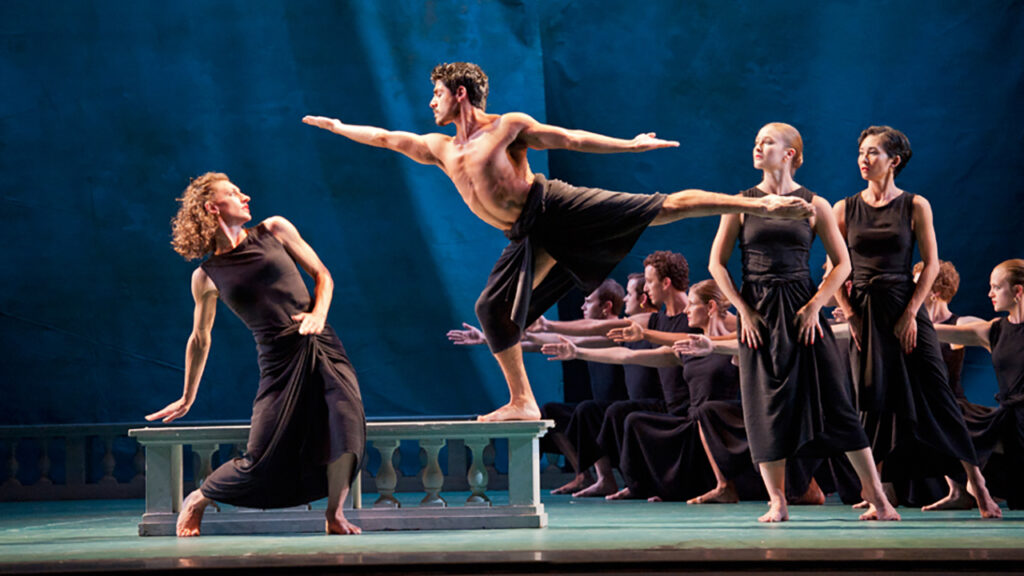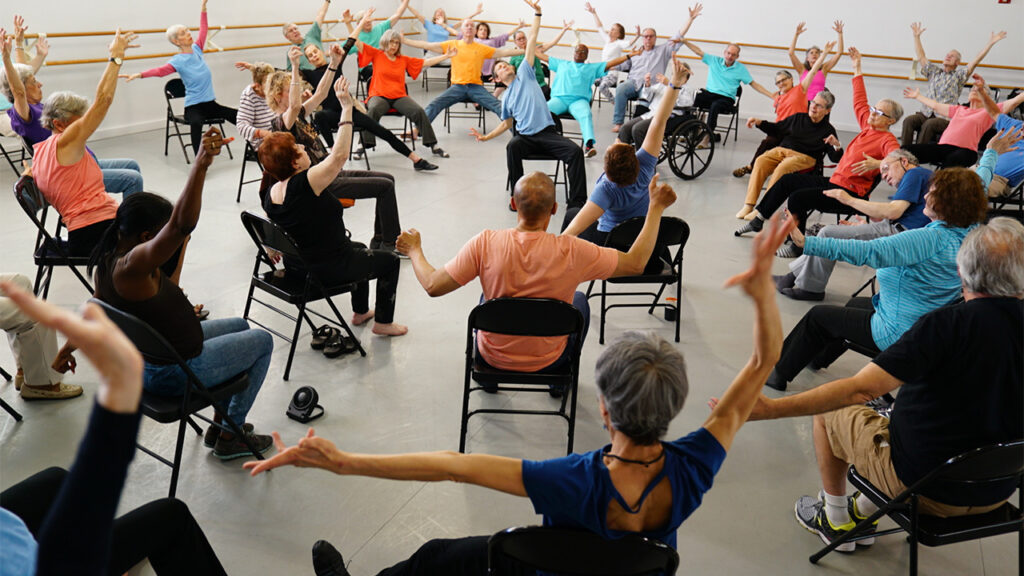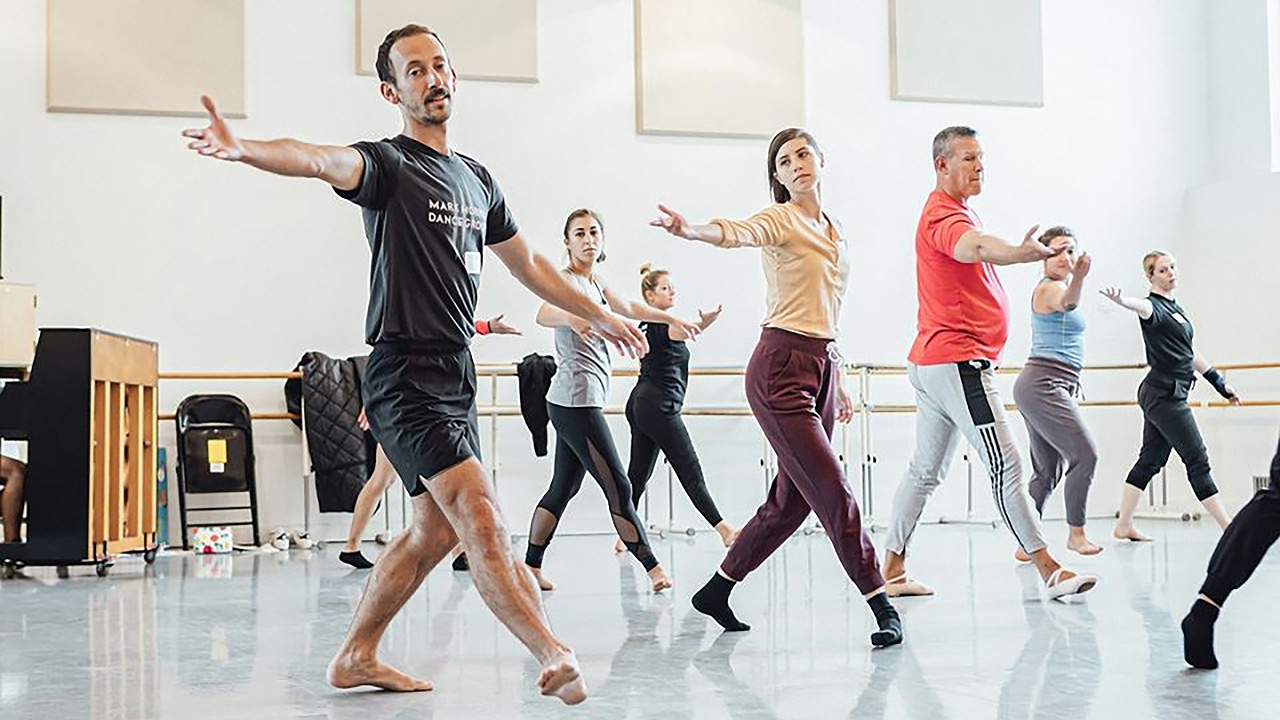At the best of times, a dance aficionado in Santa Fe, Seattle, or indeed Sydney could expect to attend a performance from Brooklyn-based Mark Morris Dance Group (MMDG) every handful of years. Despite the disruptions wrought by the pandemic on performing arts organizations, one blessing for fans of one of America’s most pioneering and unpretentious modern dance groups has been the new lease of accessibility granted by digital programming.
Historic productions from years past were uploaded, Q&A sessions with Mark Morris and his collaborators were held, fresh work livestreamed as the group took to screens masked and socially distant in celebration of its 40th anniversary. But it’s onsite, away from the grand stages and bright lights, that the group has long defined itself, developing an inclusive, community-centered dance program for people of all ages and abilities.
And in this regard, MMDG’s digital pivot has been equally impressive. Zoom dance classes obtained a global reach, online training workshops for professional development flourished, and in the space of one frantic week in March, the group reimagined and relaunched its unique class for people with Parkinson’s disease, Dance For PD®.
With MMDG easing back into pre-pandemic operations, Jing Culture & Commerce connected with the group’s team to learn what it’s learned from a year of dancing digitally.
Mark Morris Dance Group has always been community-centric. Has a year of digital programming changed what “community” and “accessibility” mean?
Nancy Umanoff, Executive Director: “Community” and “Access” are among our core values. They inform all that we do. Through our livestreamed performances, talks, events, and online dance classes, we connected with thousands of people who typically only see us once every few years when we tour their city. Our sense of community and our ability to provide access was greatly extended and enriched by our digital content and events. We’re exploring how digital programming can become a permanent part of offerings.
What are your reflections a year into digital programming? What are you finding works?
Umanoff: Live programming that provided access to Mark Morris and the dancers was very popular, such as our livestreamed conversations and Q&A sessions with Mark. We also had great success with “exclusive” content like access to films of full-length productions such as Dido and Aeneas and L’Allegro, il Penseroso ed il Moderato.
Sarah Marcus, Director of Education: Digital programming is an important access point for many of our students — whether it was geographic, time/schedule, environment, price, or meeting additional accessibility needs through features like closed captioning. Our training and professional development workshops have been really successful. They allow us to use breakout groups without taking up multiple studios, we can do polling for real-time feedback, and we can invite people from all over the world without the expense of traveling to NYC.

As part of MMDG’s digital programming, recordings of the group’s productions like Dido were made available as exclusive content. Image: Mark Morris Dance Group
How has MMDG approached the limitations of online programming?
Marcus: There’s nothing better than being in a space with a community that shares your passion for dance and music and while we tried to replicate that online, it’s not the same. We met the challenge by hiring additional teachers to ensure participants felt included.
A core tenet of educational programs is the emphasis and integration of live music in each class. With platforms like Zoom, teachers, musicians, and students were often out-of-sync and as we rebuild our programs, we hope to continue our online presence but look to create programming that is designed specifically for the digital space.
Dance For PD® is one program you’ve tailored to Zoom. Could you outline the impetus and process behind this?
David Leventhal, Program Director, Dance for PD®: On March 13, 2020, Dance for PD® announced an immediate suspension of all in-person programming; ten days later, it launched a first pilot class on Zoom. Dance for PD® had been offering a monthly streamed class from its Brooklyn studios, but Zoom was untested by program staff, teaching artists, and constituents. Rather than simply providing pre-recorded videos, Dance for PD® required interactive components be included in any digital simulation. Feedback from a virtual town hall with local constituents highlighted the importance of structure and routine. After one week, program staff expanded the frequency of Dance for PD® to take place every day and all regularly scheduled classes are offered free of charge.

Beginning in June, MMDG’s weekly Dance For PD® classes have been made available in Mandarin on Zoom “to better engage the diverse Parkinson’s community,” says Program Director David Leventhal. Image: Mark Morris Dance Group
And Dance For PD® now runs in Mandarin!
Leventhal: Yes, it’s been a longtime goal to remove language barriers for our classes and to better engage the diverse Parkinson’s community of New York City and beyond. The pandemic exacerbated inequities and discrimination against the Chinese community, and we expedited the process of launching this initiative to ensure our program is a resource for older adults and those living with Parkinson’s who may not speak English or are more comfortable engaging with us in their primary language.
It’s also been designed with the dance and music cultures of China in mind. Please elaborate.
Leventhal: The Dance for PD® pedagogy is pliable; it’s designed to allow any dance style to be accessible to people with Parkinson’s or those with mobility concerns. The teaching artists are Chinese and draw from their personal and professional experience studying and performing Chinese cultural dance. By offering the class in Mandarin, we work to ensure full access and comprehension as a starting point. Going further, we hope featuring Chinese dance and music fosters the comfort that comes with familiarity and the pride and joy that come from exploring one’s own traditions.
What does the future of digital programming look like at MMDG?
Umanoff: Digital programming is here to stay. We have seen interest in livestreamed events start to wane as the weather and public health situation improve; we believe there’s a place for digital programming complementary to in-person performances, events, and classes. [The past year,] we’ve had to learn new skills and adapt to remote work – and I’m very proud of the flexibility and resilience demonstrated by the entire staff and dancers. Like most arts organizations, we took a financial hit and we’re a bit leaner, but we’ve had a remarkable year in many respects and are very excited to return to performing, touring, and collaborating in person.



